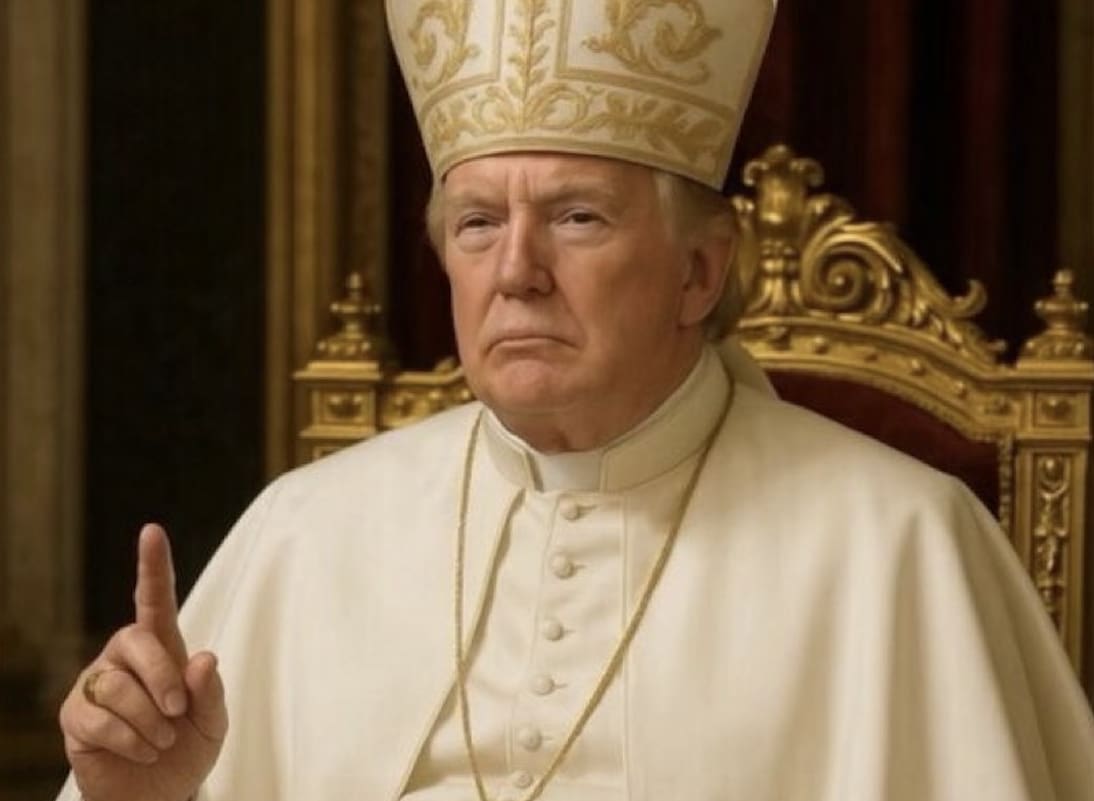
“`markdown
The digital landscape has become a battleground where technology, politics, and public sentiment collide with increasing intensity. Few incidents illustrate this tension as vividly as former U.S. President Donald Trump’s recent AI-generated image of himself dressed as the Pope, shared on his Truth Social platform. This surreal visual—later reposted by the White House on X—ignited a firestorm of reactions, exposing fault lines in religious sensitivity, AI ethics, and the unchecked power of alternative media ecosystems.
When Meme Culture Meets Sacred Tradition
The image, depicting Trump in full papal regalia with a crucifix dangling from his neck, landed like a wrecking ball during a period of solemn transition for the Catholic Church. Its release coincided with preparations for the conclave to elect a successor to Pope Francis, amplifying perceptions of disrespect. Critics like Melanie D’Arrigo, a former Democratic candidate, lambasted the post as “cosplaying sacrilege” by a figure who’d “broken all 10 commandments.” The backlash underscored a growing cultural divide: where some audiences dismissed it as harmless trolling, others interpreted it as a deliberate provocation targeting a grieving global community.
Beyond offense, the incident revealed how AI tools democratize the ability to manipulate sacred iconography. Detection tools confirmed the image’s artificial origins, but its viral spread highlighted a darker truth—the erosion of consensus reality. When deepfakes can weaponize religious symbols overnight, the line between satire and systemic disrespect blurs catastrophically.
Political Theater in the Algorithmic Age
Timing was everything. Trump’s post arrived as cardinals assembled to uphold a 2,000-year-old tradition, framing the stunt as a calculated disruption. His choice of Truth Social—a platform immune to mainstream moderation—allowed unfiltered messaging, reinforcing his playbook of leveraging controversy to dominate news cycles. This tactic isn’t new; recall his 2017 tweet of himself wrestling a CNN logo. But the papal imagery added a theological dimension, transforming a personal brand stunt into a referendum on the boundaries of political discourse.
The White House’s decision to amplify the post on X injected further chaos, suggesting either tacit endorsement or a failure to vet content. Either way, it exposed how decentralized digital platforms enable end-runs around institutional checks. Unlike traditional media, where editorial gatekeepers might flag ethical red flags, Truth Social’s echo chamber prioritizes engagement over accountability.
AI’s Ethical Quicksand: Who Polices the Machines?
At its core, this controversy is less about Trump than about the unchecked proliferation of generative AI. The technology’s ability to fabricate hyper-realistic content—from fake celebrity endorsements to forged political speeches—demands urgent safeguards. Yet current regulations lag behind its capabilities. The papal image controversy exemplifies three critical gaps:
Some experts advocate for “watermarking” AI outputs, while others push for legislation holding creators liable for harmful deepfakes. But in an era where a single viral post can eclipse institutional narratives, reactive measures may already be too late.
—
The Trump-as-Pope saga is a microcosm of our fractured digital era: a collision of irreverent meme culture, political opportunism, and emerging technology’s ethical vacuum. It reiterates that AI’s greatest threat isn’t just misinformation, but the erosion of shared respect for societal pillars—be they religious, political, or cultural. Moving forward, the burden falls equally on platforms to enforce transparency, legislators to draft guardrails, and users to cultivate media literacy. Otherwise, we risk a future where every sacred cow is just fodder for the next viral bulldozer.
“`




发表回复